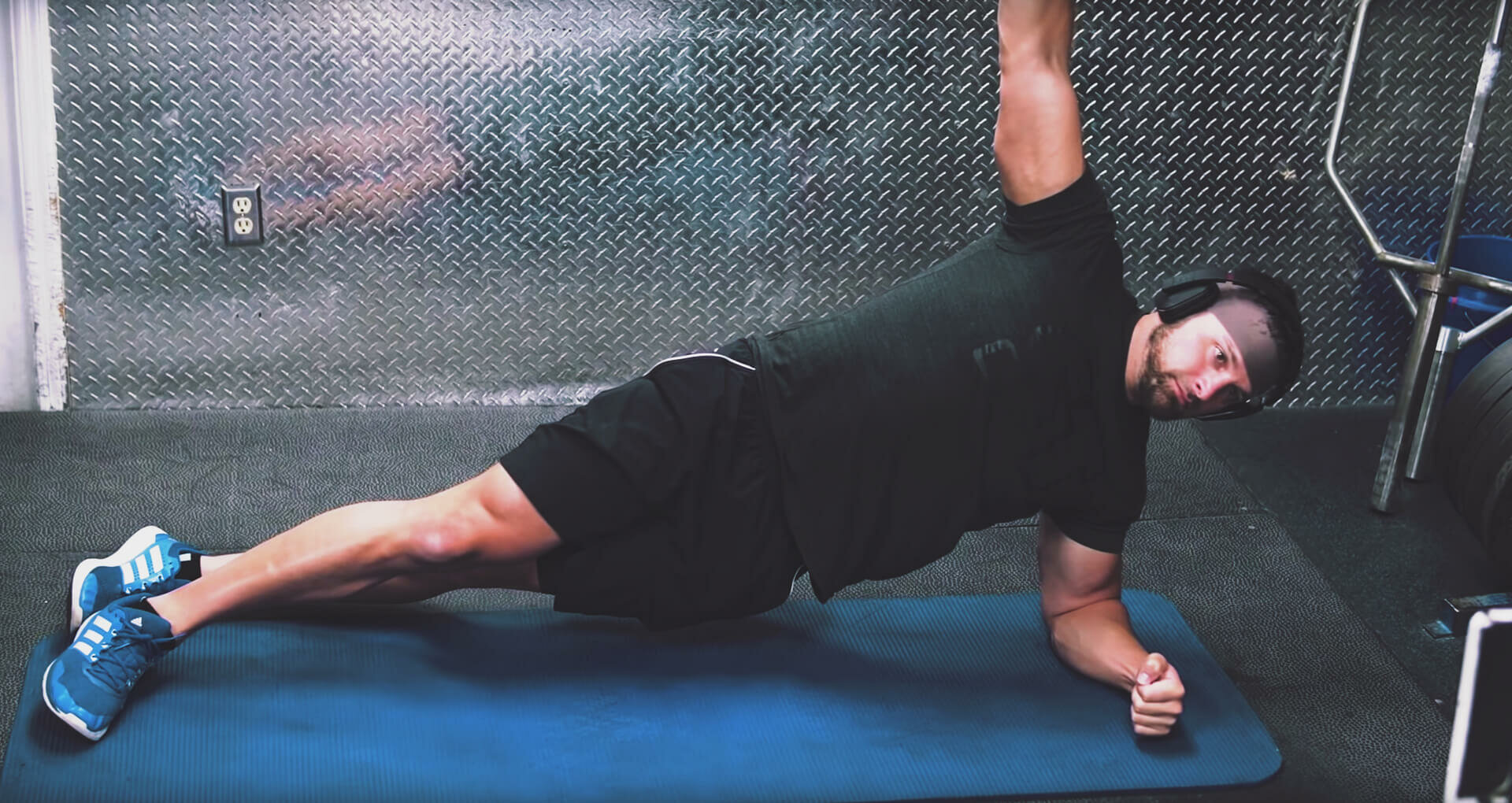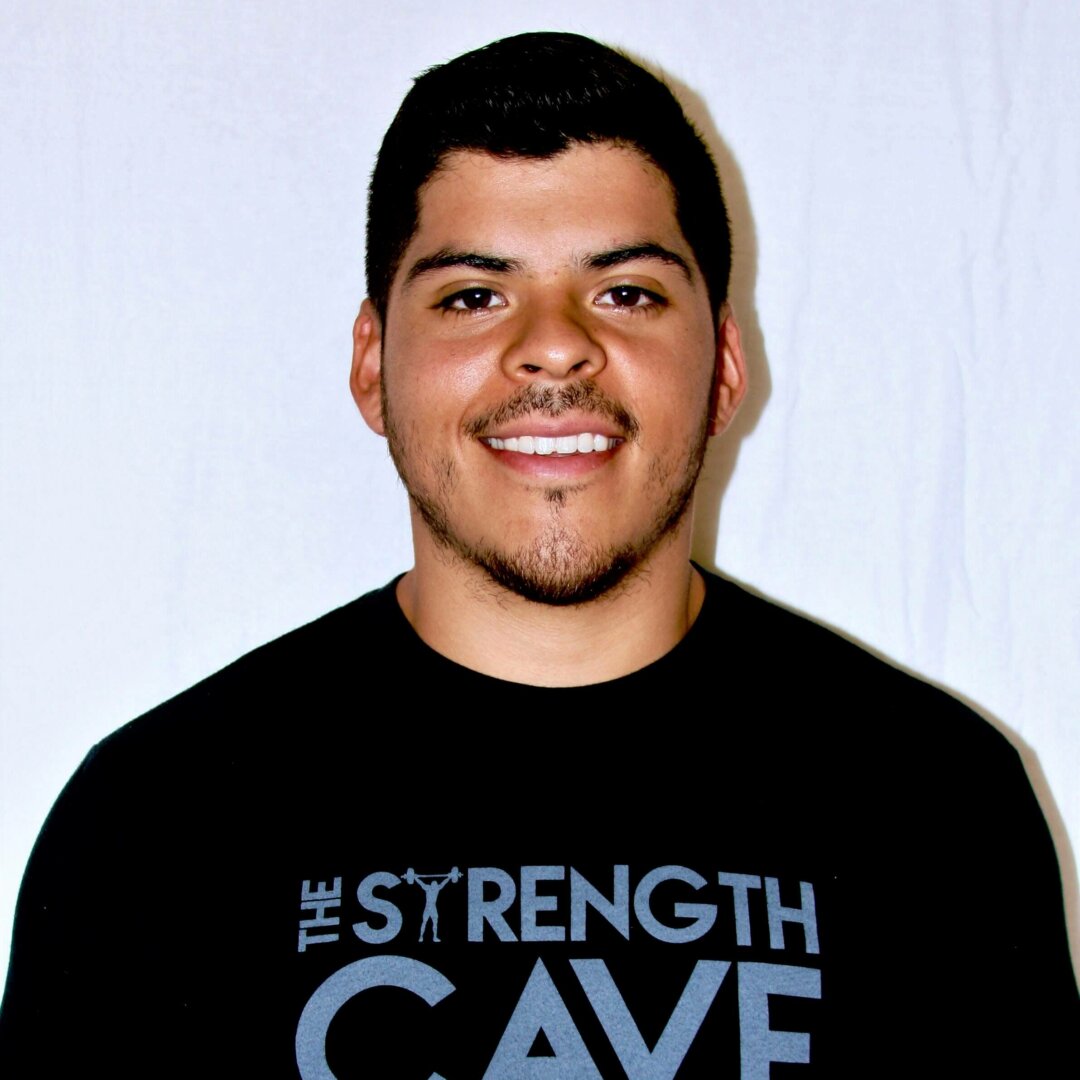If you have a little bit of imagination, there are seemingly endless numbers of ways to train a body part or muscle group. Even if you don’t have the patience to think them up on your own, you can do a simple Google or YouTube search to find hundreds of variations of a simple exercise such as a squat, hinge, or pressing movement. Of course, it is often just fine to stick with the tried and true classics like a barbell squat, or Romanian deadlift. But with all of this access to awesome exercises, you are likely to see more variety in the exercises being performed at your local gym.
One area that seems to get less attention from strength enthusiasts are exercises that train the core. This is odd because establishing a robust core training routine will help you create more force, perform better, and possibly even decrease your injury risk. However, you tend to see a lot of crunches, sit-ups, and abdominal pull downs from most people in the gym. While these might be okay exercises to train the rectus abdominis (A.K.A your six pack), are they really helping you create a well-rounded core? Is the guy in the corner of the gym doing odd looking core exercises just a weirdo or is he on to something? You might find that you are selling yourself short when it comes to training your core.
Are Crunches Bad For You?
If you ask a few different experts in the training field, you may get mixed answers as to the usefulness of exercises like the crunch, sit-up, and the like. Some will tell you that they are a good exercise for training the abdominals while others will warn you of the danger it could pose to your spine. The truth is that crunches, and especially sit ups, do place undue stress and compression on the discs of your spine [1]. However, it isn’t likely that one set of sit ups is going to ruin your spine. Instead, it is the repeated exposure to these compressive forces that eventually could lead to disc damage.
So, if you choose to perform sit ups or crunches 3 days a week for years then you may do some damage to your spine. But if you perform crunches or sit ups every so often as a targeted abdominal exercise, then you will probably be fine. This means that you definitely need some variety in your core training if you want to save your spine.
Moreover, sit ups and crunches don’t really offer a whole lot outside of training your rectus abdominis. This may be the sexiest of the abdominal muscles but it certainly isn’t the only muscle you should be worried about. If you want to have a core that helps you build more strength and perform better, you’re going to have to get more creative than simple sit ups and crunches.
You may be thinking to yourself that core training is boring. You’re right, it is kind of boring and can be pretty hard at times. But you’re trying to be the best lifter you can be right? Do you think Lebron James likes practicing footwork and ball handling drills? He probably doesn’t, but he’s trying to be the best basketball player he can be and that means doing the boring stuff too. So if you want to be as strong and awesome as you can be in the gym, it’s time to start taking your core training more seriously!
Training the “Other” Core Muscles
Although the average person may associate the core with the “six pack abs”, there are many other muscles that make up the core. Depending on who you ask, there are upwards of 30+ different muscle groups that make up the core [2]. Many of these muscles are quite small and act as synergists to bigger muscles that really do the heavy lifting of the core. So, rather than bore you with a list of all the muscles big and small, let’s simplify it into a few main areas:
Abdominal Muscles
Although the rectus abdominis is the superstar of this category, it certainly isn’t doing all the work. The abdominal muscles also include the internal oblique, external oblique, transverse abdominis, and the quadratus lumborum.
The external and internal oblique muscles allow for rotation of the trunk with the internal oblique also provide some compression/stabilization of the abdomen. While this may sound like they simply rotate the trunk, they’re probably most useful to us when they contract isometrically. That is, they resist rotation of the trunk when we perform something like a squat or a deadlift.
The transverse abdominis is our main abdominal compression muscle, and it is the one you should feel most when “bracing” your core. Essentially, this muscle contracts to compress the contents of our abdomen and create rigidity which helps us generate force. It also protects our spine from flexing under load given the rigidity it creates in our trunk.
Finally, the quadratus lumborum (QL) is a short muscle that runs from our pelvis to our rib cage with attachments to our lumbar spine along the way. This muscle helps us perform side bending as well as extension of the spine. During a deadlift, this muscle works to keep our lower back from rounding and resists any bending to one side or the other.
Training for these muscles could involve some of the following exercise:
- Plank
- Side Plank
- Plank Rolls
- Twists
- Loaded Carries
Back Extensors/Stabilizers
Core training has a lot to do with stabilizing the areas in and around the spine. As such, many muscles of the back are crucial to core stability. To make things simple, lets focus on the erector spinae muscles and the latissimus dorsi.
The erector spinae is actually a group of three muscles that run from the pelvis all the way up to lower portion of our neck. Its main function is to extend the spine and protect us from undue rounding of the back under load. This makes it a key player in keeping rigidity in the spine, and in our ability to generate force throughout the body.
The latissimus dorsi is most famous for its role in helping us perform pull ups. Indeed, it performs the action of pulling our arm down toward are ribs. However, it also serves as a powerful trunk rotator as well. This allows us to produce force from our core when in a rotated position and can also help protect us from undue rotation when it isn’t needed or wanted.
Training of these back muscles could include the following:
- Rows
- Good Mornings
- Deadlifts
- Back Extensions
- Pull-Ups
Hip Complex
When it comes to producing force in the lower body, our hips are undoubtedly the powerhouse of the operation. Although many muscles exist in the hip, the main ones we rely on for core stability are the gluteus maximus, gluteus medius, gluteus minimus, and the iliopsoas.
We all should recognize the gluteus maximus muscle as possibly the sexiest muscle in the human body (for sure if you ask Bret Contreras). But besides helping us attract a mate, it also acts as our main driver of power in the lower body. This muscle allows us to extend the hip and trunk. Overtime, weakness in this muscle can lead to overuse of spinal extensors and low back pain.
The gluteus medius and minimus work very closely with one another to help us to abduct the leg (spread/move the leg outward). In addition, they also function to prevent adduction of the leg (inward movement/knee caving). This is particularly useful to us if we want to squat and deadlift properly. These muscles prevent the knee cave we see many lifters suffer from. Additionally, weakness or dysfunction of these two muscles can force the quadratus lumborum to perform hip abduction. Overtime, this can lead to “tightness” and weakness in the QL and serious back pain.
The Iliopsoas is a muscle that runs from the front portion of our femur (thigh bone) to the upper portion of the pelvis and the lumbar spine. The main function of this muscle is to flex the hip by bringing the femur up toward the trunk. Many people complain about “tight” hip flexors, especially when squatting or deadlifting. This tightness can even start to cause pain in the lower back by pulling on the lumbar spine. However, this tightness is often not an issue of flexibility, but more so an issue with strength. A weak iliopsoas will become “tight” over time. Stretching may help temporarily but strengthening this muscle is the true remedy.
Training of the hip muscles might include:
- Clamshells
- Banded Abductions
- Leg Raises
- Hip Raises
- Glute Bridges
Conclusion
The core is probably the most under trained group of muscles that we see today. Most core training is either inadequate or missing completely from many training programs. It is actually quite a shame that this is the case given the vast impact it can have on our strength and performance. In fact, training your core more diligently will likely lead to more weight being added to the bar and less injuries being sustained from training.
The first thing to know is that the core is comprised of many more muscles than just the “abs”. In reality, our abs aren’t even the most important of the abdominal muscles. Many other movements besides sit ups or crunches need to be included in our training routine if we are going to build a robust core. If you aren’t already taking time to train your core, please do so. Make sure to think outside the crunch when it comes to your core training and you should start to see some real results in due time!
References
- Axler, C.T. and McGILL, S.M., 1997. Low back loads over a variety of abdominal exercises: searching for the safest abdominal challenge. Medicine and science in sports and exercise, 29(6), pp.804-811.
- Kibler, W.B., Press, J. and Sciascia, A., 2006. The role of core stability in athletic function. Sports medicine, 36(3), pp.189-198.


